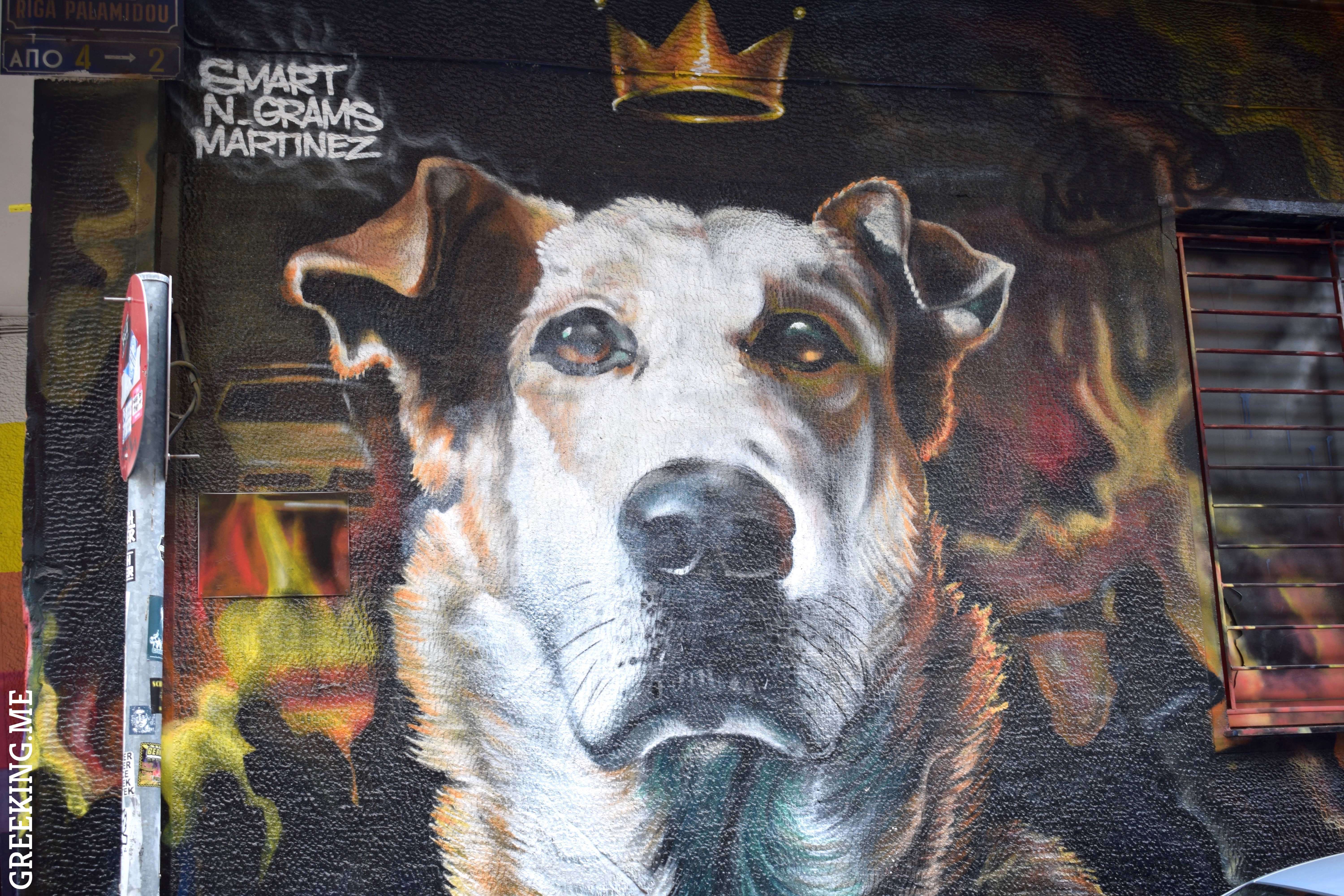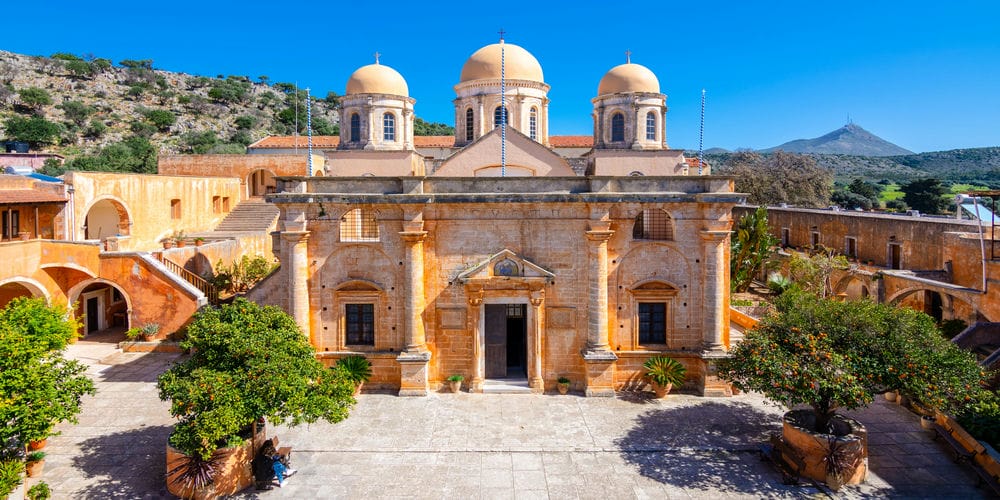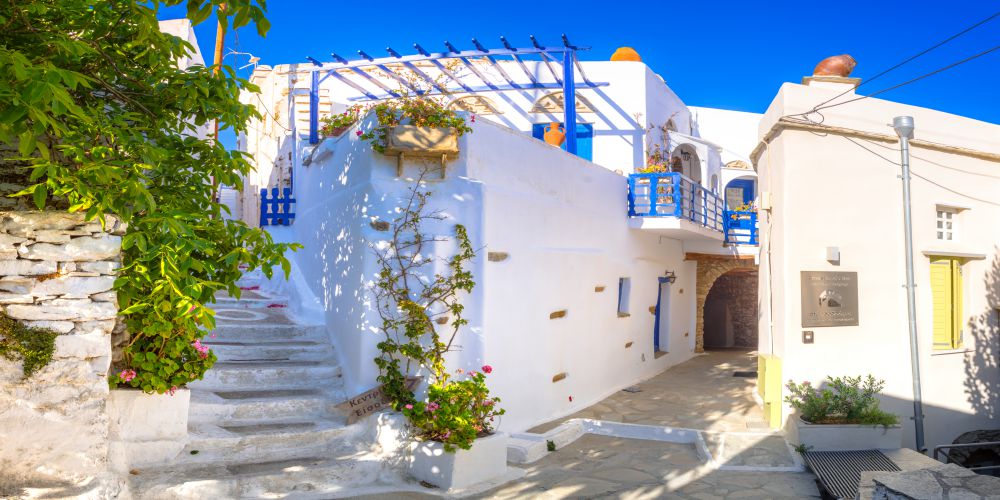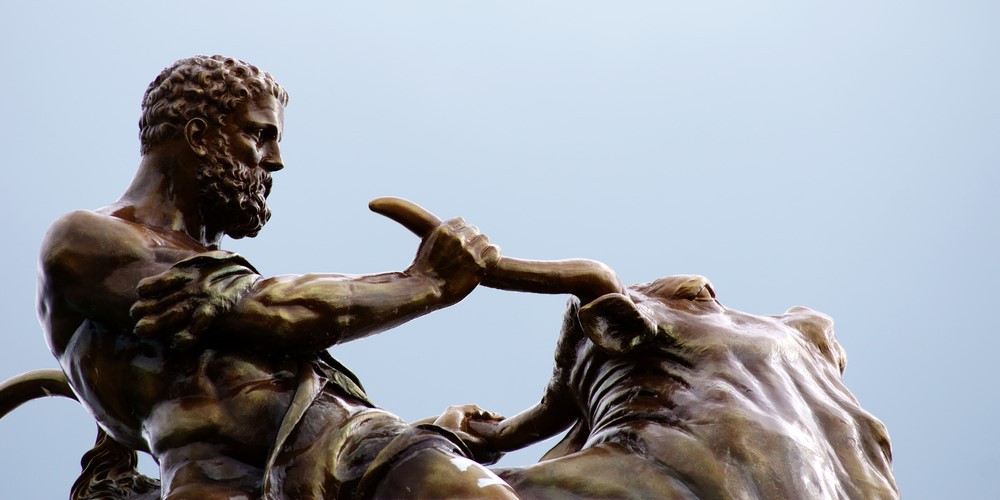
The Most Famous Paintings of El Greco
Key Takeaways
- El Greco, a great painter of the Renaissance from Crete, lived and worked in Spain, earning the nickname "The Greek."
- His artistic journey led him from studying Byzantine and Western art in Crete to working in the workshops of renowned painters in Italy.
- El Greco's unique style, characterized by elongated figures and vivid colors, is evident in his notable works like "The Burial of the Count of Orgaz" and "Laocoon."
- Though his recognition was delayed for centuries, El Greco's art is now highly regarded, influencing modern artists like Picasso, solidifying his place as one of the most significant visual artists of all time.
The world-famous El Greco was a great painter of the Renaissance, originally from Crete. He is undoubtedly one of the greatest figures of world art. He lived and worked most of his life in Spain, hence the nickname El Greco (The Greek), by which he is also known.
Doménikos Theotokópoulos
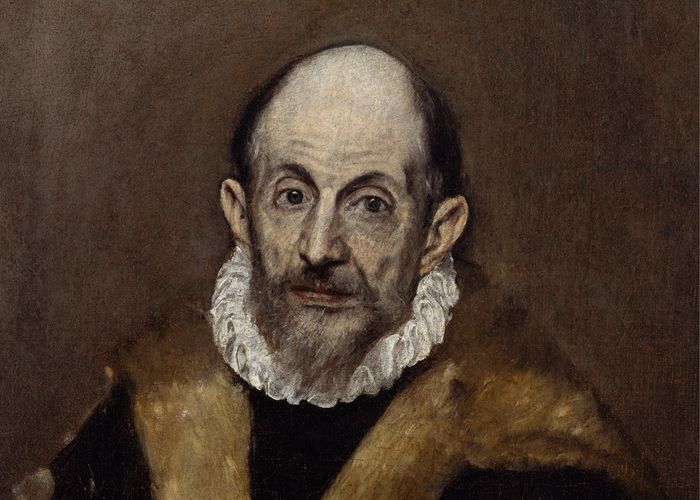
Domenikos Theotokopoulos was born in 1541 in Chandakas - the present-day Heraklion- in Venetian-occupied Crete, to wealthy parents.
Without knowing much about his teachers and his artistic apprenticeship, there is no doubt that he had the opportunity to study Byzantine painting in his hometown and become acquainted with Western art.
In 1567, he traveled to Italy and specifically to Venice, where he remained for three years and studied in the workshops of the painters Basano, Titian, and Tintorendo, while he painted paintings, such as 'The Persecution of Merchants from the Temple.'
In 1570, he left Venice and went to work in Rome. In the Eternal City he expanded his circle of acquaintances and gained such confidence in his art that he argued that if the murals of the 'Sistine Chapel' painted by Michael Angelos were destroyed, he could do better.
This remark was then considered blasphemy and hastened his decision to leave Rome and in combination with his acquaintances in the circle of Spanish nobles of Rome to settle first in Madrid in 1576 and the following year in Toledo.
In this Spanish city, his artistic production reached its peak. He decorated the church of St. Dominic, the palace of the Escorial, and the metropolis of Toledo with paintings. His great paintings are 'The Assumption of the Virgin,' 'The Holy Trinity,' 'The Resurrection of the Savior,' 'The Martyrdom of Christ,' 'Espolio,' 'The Laocoon, ' and 'The Pentecost.'
1578 was an important year in Greco's life. He will have his first and only child, Jorge Manuel, from his relationship with Dona Cheronima de las Cuevas, with whom he will live the rest of his life, but he will not marry her. Scholars of his work believe that Donna Cheronima is depicted in the portrait 'The Lady with the Ermine.'
Domenikos Theotokopoulos died on April 7, 1614, at the age of 73, and was buried in the church of Agios Domenikos in Toledo.
For many years his name remained in obscurity, and his paintings in churches and palaces of Italy and Spain were considered works of some madman.
From the beginning of the 20th century, his work began to be recognized, and today he is considered one of the leading visual artists of all time, who influenced painters of modern art, such as Pablo Picasso.
Greco paintings adorn the major museums and private collections, and the value of some of them is indescribable. In Greece, there are six works by Theotokopoulos: 'Saint Luke paints the Virgin' and 'The Worship of the Magi' in Benaki Museum, 'The Coronation of the Virgin' and 'The Concert of the Angels' in the National Gallery, 'Baptism of Christ' And 'View of Mount Sinai Monastery' in the Historical Museum of Crete.
El Greco Style and Technique
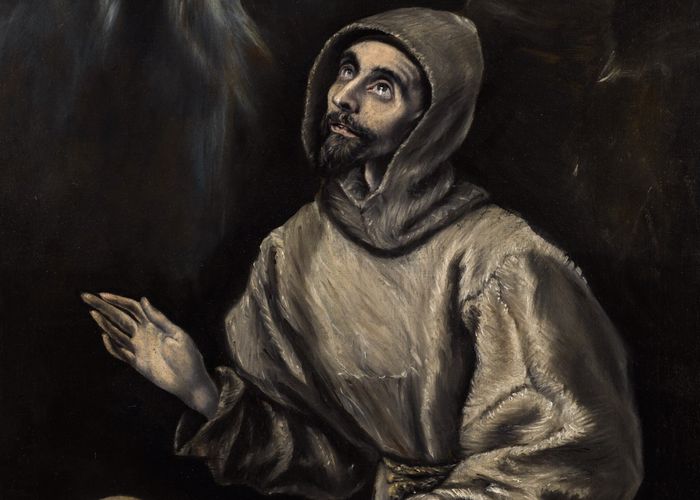
The Ecstasy of St.Francis of Assisi - credits: sothebys.com
The work of the painter whom Pablo Picasso called 'father' and became known as El Greco was to remain in obscurity for three centuries.
Theotokopoulos was discovered at the beginning of the twentieth century by art historians - who considered him a forerunner of expressionism - but primarily by painters, who rushed to adopt features of his art - with Cézanne, who was fascinated by his elongated figures, to precedes.
Later, Picasso followed and then Jackson Pollock, while the personality of the painter inspired writers such as Rainer Maria Rilke and Nikos Kazantzakis, one of the most significant faces of modern Greek Literature.
Initially, he worked in the late Byzantine style of painting in Candia. In 1567-1570, he lived in Venice, perhaps a student or follower of Titian who was influenced by Tintoretto, Bassano visited Parma, where he praised the work of Correggio.
In 1570, he moved to Rome, gaining fame at the Roman Academy of St. Luke. The stay in Rome significantly expanded the horizons of the young artist, related to the humanitarian environment of Cardinal Alessandro Farnese, and survived the strong influence of Michael Angelos and the late Mannerists.
From 1577 until the end of his days, the painter El Greco lived and worked in Toledo, Spain. There, El Greco made himself famous for his religious paintings and portraits, had a major influence on Castilian artists, and died, according to Palomino, in 1614.
As a painter, El Greco initially imitated Titan and other Venetian painters, but then, in search of his own style, he began to paint in a limited number of colors, in bright, cold, and sometimes disharmonious colors, and to draw dryly and skillfully in the so-called good-natured way.
However, even the latest works of the artist El Greco have their own character, which consists of a strong expression of a seriously pious, ascetic feeling.
El Greco's most notable paintings are 'Warriors Sharing the Savior's Clothes,' 'The Torture of St. Mauritius and His Companions,' and 'Burial of Count Orga.' Some of the portraits of El Greco are very good, a sample of which, but not particularly important, the portrait of the poet A. Ercilla, can be seen in the Hermitage Museum.
El Greco was also a great architect and sculptor. He designed churches in which he put very expressive statues that adorn the altars and tombs of the founders of the monastery.
In Europe, from the end of the 16th century and the beginning of the 17th, Theotokopoulos's art stands out not only with the power of its submission, with its spiritual quality, and with the mental climate it expresses, but above all with the peculiarity of the means of expression with which the Cretan painter manages to realize his painted visions.
No European painter gave so much importance to the human form, and at the same time, they did not get so much freedom in their plastic presentation, in their structure, in their proportions, in their strange posture, in their incredible stretch. Rarely the wide folding had such great expressive value.
Never light got so much autonomy in European painting and such great value in the expressiveness of the work. The color in El Greco’s paintings reaches such an intensity that it exceeds the importance of the object shown.
El Greco Most Significant Works
The Burial of the Count of Orgaz
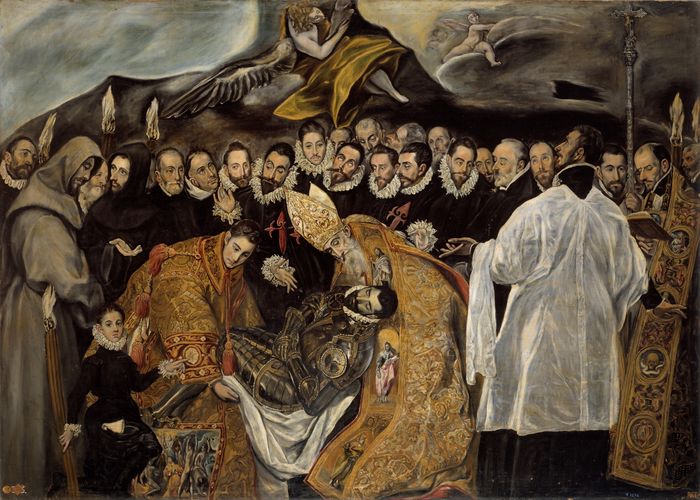
Perhaps the last work of the period is the masterpiece and famous 'The burial of Comet Orgath.’ It is exhibited alone in a special space in Toledo.
This work is huge and literally shocking in all areas: its composition, details, and atmosphere. Each sub-scene is in itself a wonderful tableau, and an expert analysis would be at least multi-page. It contains several portraits of important people of the time.
Regardless of the quality of the work, an entire background was played out around his order as Orgaz's pastor after his death - a merciful master - wanted to build an imposing chapel over his tomb.
The painter wanted to immortalize the miracle that happened during the burial of the earl -presumably, Saints Stephen and Augustine placed the dead earl in the pit- as well as the vindication of the pastor.
The inhabitants of the area ruled by the earl, when he died, refused to pay the annual contribution for the maintenance of the monastery and the chapel. Eventually, the good pastor imposed his will through the courts.
The painting includes two distinct areas. At the bottom of the composition is depicted the funeral of the earl, while at the top, which symbolizes paradise, his soul is transported by an angel, taking the form of a child.
According to a legend, at the time of the burial of the earl, Saint Stephen and Saint Augustine miraculously appeared.
It has been argued that certain figures in the painting depict Toledo's prominent personality. In particular, one of the figures on the right side of the painting is identified with Antonio de Kovaroumbias, comparing it with his portrait, which was painted by Theotokopoulos in 1600.
Laocoon
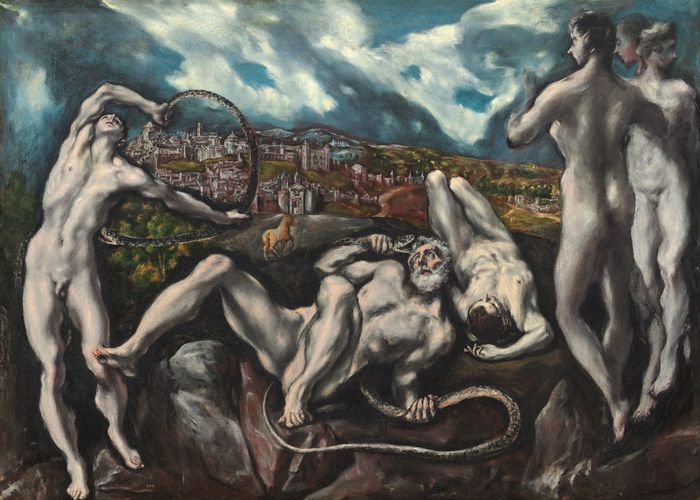
This work, with its mythological content, is unique in the repertoire of El Greco. The myth is well known. Laocoon, a priest of Apollo in Troy, was devoured by snakes along with his children after he had opposed the transfer of the Trojan Horse into the city of Troy.
The painter was inspired by the sculptural complex of Laocoon located in Rome. Experts distinguish elements of the style of Michael Angelos, while the landscape in the background is reminiscent of Toledo, Spain. The project, however, remained unfinished.
All the nervous naked bodies are shaped through light, thus creating fluid and wavy contours. It is noteworthy that these characteristics obey the rules of expressionism. On the right, some other people are watching the tragedy. One of them remained unfinished and, in fact, has two heads. It is believed to depict one of the three women: Athena, Eva, and Pandora.
Of course, this shows the painter's indecision regarding the inclination of the woman's head, to the left so that he observes the tragedy with horror or to the right so that he does not see the event.
The Disrobing of Christ

The assignment of this painting to Domenikos Theotokopoulos, which was intended for the cathedral of Toledo, was due to the clergyman Don Diego de Castilla. The composition is completely unusual, without perspective, strongly reminiscent of Byzantine painting, an art that the painter had studied in Crete.
In a patchwork of people, almost unified by the uniformity of colors, Christ is illuminated wearing a red tunic which a vulgar man on the left is preparing to pull. The nakedness of Christ is a rare theme in Christian iconography.
The episode does not refer to the four recognized gospels, but it is concluded that it happened from the verse about the soldiers who played dice in the robe of Christ. This episode itself is described in the occult gospel of Nicodemus.
In 1587, the value of the painting was estimated at 227 ducats, but the artist had asked for 880 as a reward. The orderers tried to reduce the price because the painter did not faithfully follow the evangelical passage and added to Golgotha the three Marys on the left of the work.
View of Toledo
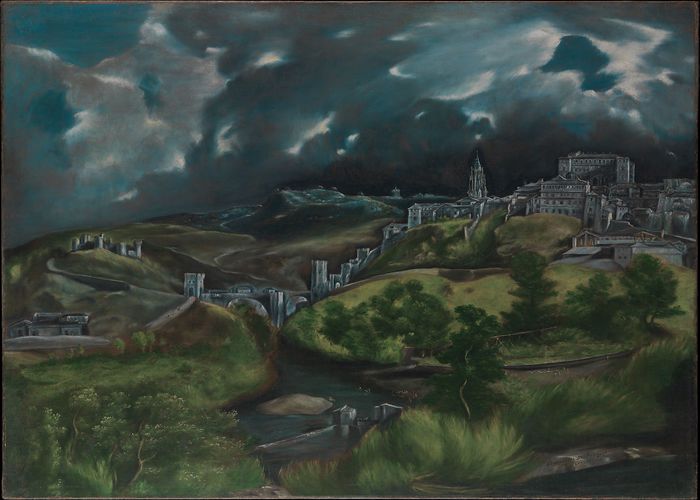
Greco's devotion to landscape, which is one yet proof of its uniqueness, in its panorama Spanish painting of the time, can be explained with a combination of three factors: his personal drive towards landscape illustration, his knowledge of Venetian cartographic, and landscape tradition as well as preference in the view of cities that characterized some his friends or patrons.
When the artist died, in his workshop, there were three views of Toledo. They are mentioned in the census of 1614 as 'a Toledo' and ‘two landscapes of Toledo. In 1621, the three works were still in possession of his son.
The Expulsion Of Traders From The Temple
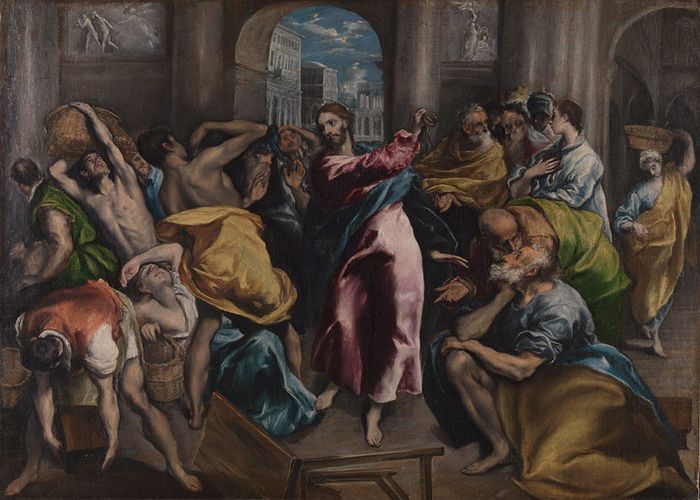
There are different versions of the theme. The gospel episode is depicted by the painter as a harbinger of the Last Judgment. Christ, with a dynamic gesture, separates sinners on the left and the elect on the right. The separation is achieved with the Palladian architecture of depth.
Christ is placed in front of the arch of the gate, while the reliefs between the columns correspond to the two sides of the composition.
On the right, Isaac's sacrifice preserves the Divine Passions. The elongation of the figures, the twists of the bodies, characteristic elements of the painting of the mannerist El Greco, the strong expression indicate the influences that the painter received during his apprenticeship near the top Titian.
Finally, elements such as pigeons, discarded coins are missing from the scene, and experts speculate that reference is made to the Counter-Reformation movement that aimed to sanctify the Western Church from Luther's sect.
Saints Peter And Paul
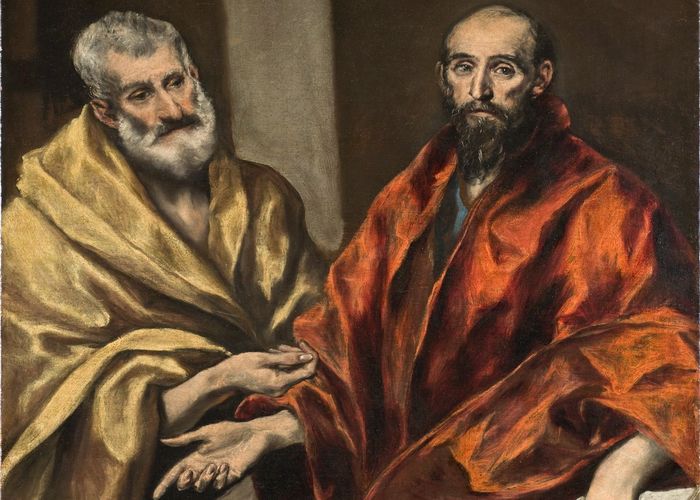
The work can be included in the general context of the painting artist of the Apostles during his stay in Toledo, although two Apostles are presented together. The painting is a masterpiece.
The figures of the Apostles are depicted from the middle and above, and bright colors stand out from the dark background. The iconography of the figures obeys the traditional standards, although the painter introduces innovations.
Saint Peter hides his emblem, the key, a symbol of his power that had been given by Christ. St. Paul rests his hand on the book, which shows the power of persuasion of his letters.
If Leonardo Da Vinci was the painter who colonized the human perception of the face of holiness in the smile of the Gioconda, and Michalatzelo the one who rendered man as an image and likeness of the Creator, Dominikos Theotokopoulos rendered human metaphysical agony best of all.
Final Thoughts
El Greco was a goliath of world art, the painter who lived between two eras, in the old world of art that was lost and in the new that was coming. But most importantly, he was the prophet of modern times.
Learn more about El Greco and other important figures of art and culture by visiting Greece with one of our Greece vacation packages; the best is yet to come!





